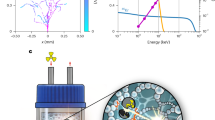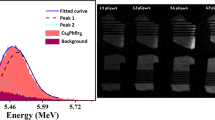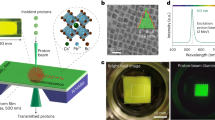Abstract
THE determination of radioactive krypton in the atmosphere, as carried out by the Radiological Sciences Laboratory, New York State Department of Health (private communication from N. Irving Sax), involves extraction and concentration of krypton, then injection of this into a vial containing chips of a scintillation counter plastic, such as p-terphenyl in polyvinyltoluene commercially available from Pilot Chemicals, Massachusetts. By scintillation counting, this procedure measures extremely low levels of the β emitter, 10.76 yr krypton-85.
This is a preview of subscription content, access via your institution
Access options
Subscribe to this journal
Receive 51 print issues and online access
$199.00 per year
only $3.90 per issue
Buy this article
- Purchase on SpringerLink
- Instant access to full article PDF
Prices may be subject to local taxes which are calculated during checkout
Similar content being viewed by others
References
Frisch, H. L., and Rogers, C. E., J. Chem. Phys., 40, 2293 (1964).
Norton, F. J., J. Amer. Ceram. Soc., 36, 90 (1953).
Norton, F. J., J. Appl. Polymer Science, 7, 1649 (1963).
Daynes, H., Proc. Roy. Soc., A, 97, 286 (1920).
Newman, A. B., Trans. Amer. Inst. Chem. Eng., 27, 203 (1931).
Norton, F. J., J. Cellular Plastics, January (1967).
Author information
Authors and Affiliations
Rights and permissions
About this article
Cite this article
NORTON, F. Krypton Diffusion in Scintillation Counter Plastic. Nature 218, 165 (1968). https://doi.org/10.1038/218165a0
Received:
Issue date:
DOI: https://doi.org/10.1038/218165a0



